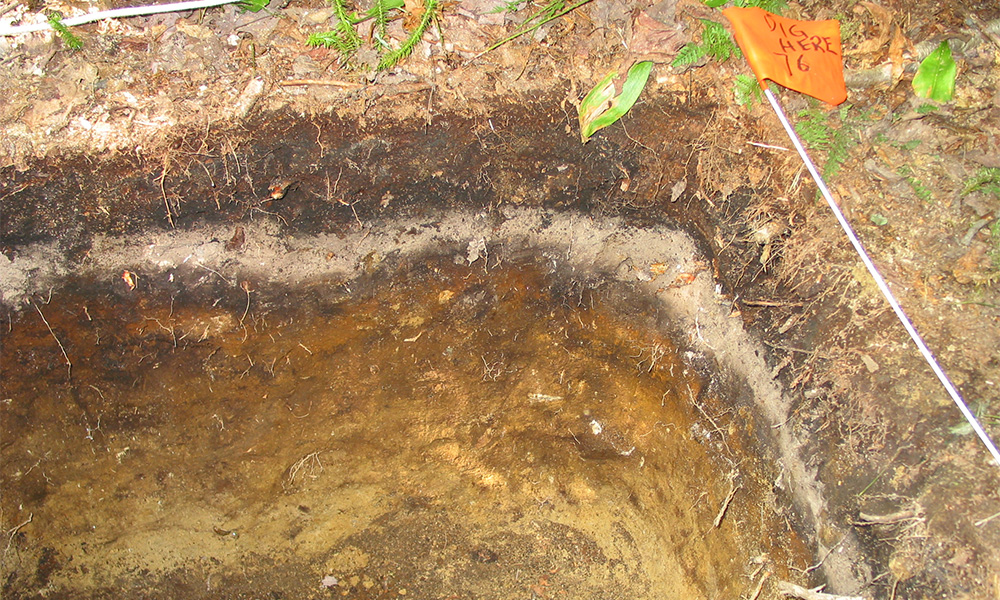Long-term Soil Monitoring Program Established to Detect Environmental Change
Feb. 8th 2022Long-term soil monitoring requires planning and design to effectively detect changes and trends over time. Forest soil monitoring can be used to understand how forests are being impacted by environmental change, including climate change, atmospheric deposition, and recovery from acidic precipitation. Soil health can be an indicator for forest health and how to manage for changing conditions.
Monitoring not only provides a baseline of information, but also creates an archive that can be used for analysis and tracking the effects of pollutants over time. Monitoring soil is challenging due to the variability in physical and chemical properties. To have high confidence in the data and manage for this variability, many samples and consistent methods are needed as part of the sampling design.
The Vermont long-term soil monitoring program, established in 2002, has completed four cycles of five-year intervals at five protected forest sites. A research team designed the monitoring program to continue for more than 100 years to understand the effects of environmental change on forest soils. The team chose to monitor carbon, nitrogen, and exchangeable cations to detect change over time. Samples are being archived so that trends in other soil properties can be examined in the future.
The program includes five project sites, each consisting of a 50 x 50-meter plot, that represent a range of forest cover types, elevations, and soil conditions typical of upland areas of northern New England. Sites are located in two protected areas, Mount Mansfield State Forest (three sites) and Lye Brook Wilderness Area (two sites). Each plot is divided into 100 5 x 5-meter subplots that have 2.5 x 2.5-meter quadrants. Randomly selected quadrants will be sampled in 10 subplots each five-year sampling cycle, continuing for 18 more cycles, or at least until 2107.
Researchers collect samples from soil pits dug in each subplot with organic horizons sampled from the undisturbed surface and mineral soil sampled across the pit face. See top photo that shows the horizons or layers of soil in a soil pit.
The methodology used for this program allows for the detection of minor changes in the elements at each site over time. After four cycles of samples were collected, comparisons over time showed a range of variability within each site. The exchangeable calcium in the soil’s B horizon was the most variable at all sites. The carbon to nitrogen ratio, as well as carbon alone, was the least variable in both the O horizon and B horizon at all sites. After fifteen years and four cycles of sample collection and analysis, relatively small changes in soil chemistry are detectable (e.g., 1.5% decrease in exchangeable aluminum at a site).
During the same time period, acid deposition has continued to decline and forests are recovering from the long history of acid rain. Effects of climate change are also observable during this time period, including increased wet precipitation and soil moisture. This data collection will be invaluable as a baseline set of information to understand changes in soil chemistry, related changes in forest condition, and how climate change and other environmental changes may impact soil chemistry.
Vermont’s long-term soil monitoring program is looking for ongoing support from researchers who can help to continue the study into the future. Please contact Donald Ross at dross@uvm.edu.
 ecoNEWS VT
ecoNEWS VT